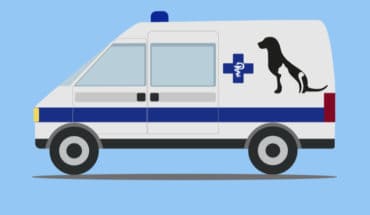Panic attacks can happen to anyone, without any obvious cause or warning. They can be extremely alarming both for the person experiencing the attack and anyone trying to help
Exams increase stress – and children and teenagers up and down the country will be sitting in exams halls, waiting to hear the famous words “you can turn your papers over now”. For some, exams cause no problems at all, many just get butterflies, but for some, the fear of exams can result in full blown panic attacks. (For specific information about how to help your child during stressful times, we suggest you read this article).
Certain times of life can make people more prone to panic attacks, often those going through menopause experience them and early Alzheimer’s can also result in a higher incidence. Increased stress and overload can often be a contributory factor. However, there does not need to be any obvious reason – sometimes, they just happen!
Panic is an extreme feeling of fear and dread, and usually the overwhelming desire to escape an uncomfortable situation. Most people have experienced a sense of panic at some time in their life – it is a perfectly normal response. Some people have a history of panic attacks and know what can trigger them. For others, they can occur suddenly, with no obvious cause. Read on to learn the signs to look out for and what you can do to help.
Physical reactions may be frightening and can include the following:
- A pounding and racing heart or even palpitations (feeling your heart is stopping or missing beats)
- Shortness of breath or a feeling of choking
- Shaking, tingling or numbness in your fingers and toes
- Feeling sick and dizzy
- Sweating
- Needing the loo
- Thinking you might die
- Feeling you are losing control of your mind – even that you are going crazy
- Aggressiveness, sometimes due to the wish to escape
Difficulty breathing due to panic attacks should not be confused with asthma.
Asthma is an extremely common chronic and potentially life-threatening condition. When someone has Asthma; their airways go into spasm which causes tightness of the chest; the linings of the airways become inflamed and produce phlegm leading to severe difficulty in breathing.
If someone is having an asthma attack, they need their medication and help quickly, whereas panic attacks are usually short lived, and the casualty quickly makes a full recovery.
During asthma attacks, casualties wheeze and struggle to breathe out, whereas large volumes of air can be heard entering and leaving the lungs when someone is hyperventilating and having a panic attack.
How to help if someone is having a panic attack:
- Reassure them; they may be unable to explain what has caused them to panic and do not pressure them to do this, your calm presence should help.
- Speak to them in positive, supportive terms – “You will be okay, this will pass in a minute” etc.
- Remove them from anything obviously causing distress.
- Encourage them to focus on their breathing and breathe calmly and slowly, in and out through their nose and out of their mouth, to reduce the amount of carbon dioxide being lost.
- Small sips of water may help to calm them.
- Stamp on the spot. Some people find this helps control their breathing.
- Try grounding techniques. Grounding techniques can help someone feel more in control. They are especially useful if experiencing dissociation (a feeling of disconnect or flashbacks) during panic attacks.
- Encourage them to concentrate on sounds around them
- Walk barefoot
- Wrap them in a blanket
- Touching something or sniffing something with a strong smell.
- Focus on the sensations right now. Some people keep a box of things with different textures and smells (for example perfume, a blanket and some smooth stones) ready for when they need it.
If symptoms get worse, get medical help. When the panic attack is over, talk it through with them. Discuss relaxation techniques and other helpful means of coping in case this happens again.
Do not suggest breathing in and out of a paper bag. People used to think breathing in and out of a paper bag was helpful during a panic attack, and the physiology makes sense; breathing out in panic results in the loss of carbon dioxide in the blood and breathing into a bag restores the lost CO2.
The danger with a paper bag is that the casualty may become dependent upon it and can panic if they do not have one to hand (my mother suffered from numerous panic attacks in the early stages of her Alzheimers and quickly became obsessed with paper bags after someone had encouraged her to use one).
It is extremely dangerous using a paper bag with someone is having an asthma attack and can make things considerably worse.
If attacks are persistent and severe, the patient can be referred for specialist help.
For more information you could look at this course on advanced mental health first aid.
- What is a seizure? - 13th March 2025
- Febrile Convulsions and Seizures in Children - 13th March 2025
- Why women are less likely to receive CPR or survive cardiac arrest - 6th March 2025






